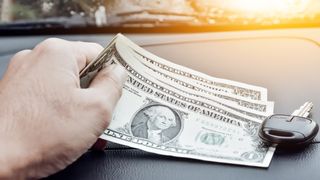A similar pattern was also seen in the market for used cars, where the average loan amount increased from $20,824 to $22,467 year-over-year, and average monthly payments increased $18 to $413, surpassing $400 for the first time.
What’s driving auto prices higher?
What may surprise car buyers having to dig deeper into their pockets is that the interest rates charged on the best auto loans (opens in new tab) actually dropped over the quarter. The average rate for a new vehicle loan fell to 4.31%, down from 5.25% a year earlier, while interest costs on used cars fell from 9.05% to 8.43% over the same period. That leaves a rise in the price of the cars themselves as the only explanation for the increase in loan and payment amounts, something which the report (opens in new tab) says has likely been driven by buyers’ increasing preference for larger vehicles such as pickups and SUVs. Indeed, in the final quarter of last year, more than half of new vehicles financed were small and mid-sized SUVs.
New cars back in favor
Some buyers who suddenly found themselves with stimulus checks (opens in new tab), and who didn’t need to use the funds to keep their immediate finances afloat, are also likely to have been able to spend more on higher spec models, according to Experian, while lower stock levels - resulting from factory lockdowns - will have pushed prices higher too. Last summer’s pandemic-related trend towards buying used cars (opens in new tab) rather than new ones also appears to have fallen away, inevitably meaning people will be spending bigger on the latest vehicles off the production line. In particular, the report found that buyers with strong credit (opens in new tab) had recently been shifting away from used vehicles, back into financing new vehicles.
Keeping cars affordable
Following the increases in average loan amounts and payments, Melinda Zabritski, Experian’s senior director of automotive financial solutions, says “affordability will continue to be an important topic to pay attention to, particularly as market conditions continue to develop in 2021”. “The events of 2020 disrupted the automotive industry and we’ve seen some consumers shift away from patterns that have been cemented over previous quarters such as opting for used vehicles,” she added (opens in new tab). “While we can likely attribute some of the change to stimulus checks, carry-over incentives and tight inventory, we find ourselves in uncharted territory.” For motorists, this means making car-buying choices that are within their financial means. With research recently showing the cost of owning a car in the US has passed $9,500, for some, the priority will always be finding the vehicles that are cheapest to run (opens in new tab). Securing the lowest rates on car loans is one way of keeping costs down, but will usually require a decent credit score to show the lender that you’re good for what you wish to borrow. It’s also possible to save hundreds of dollars simply by shopping around for the best auto insurance (opens in new tab). If buying second-hand, there’s a good chance you’ll be spending less if you were to buy a new car, but then the price attached to the best extended car warranties (opens in new tab) and the cost of roadside assistance cover (opens in new tab) could become major considerations too.
